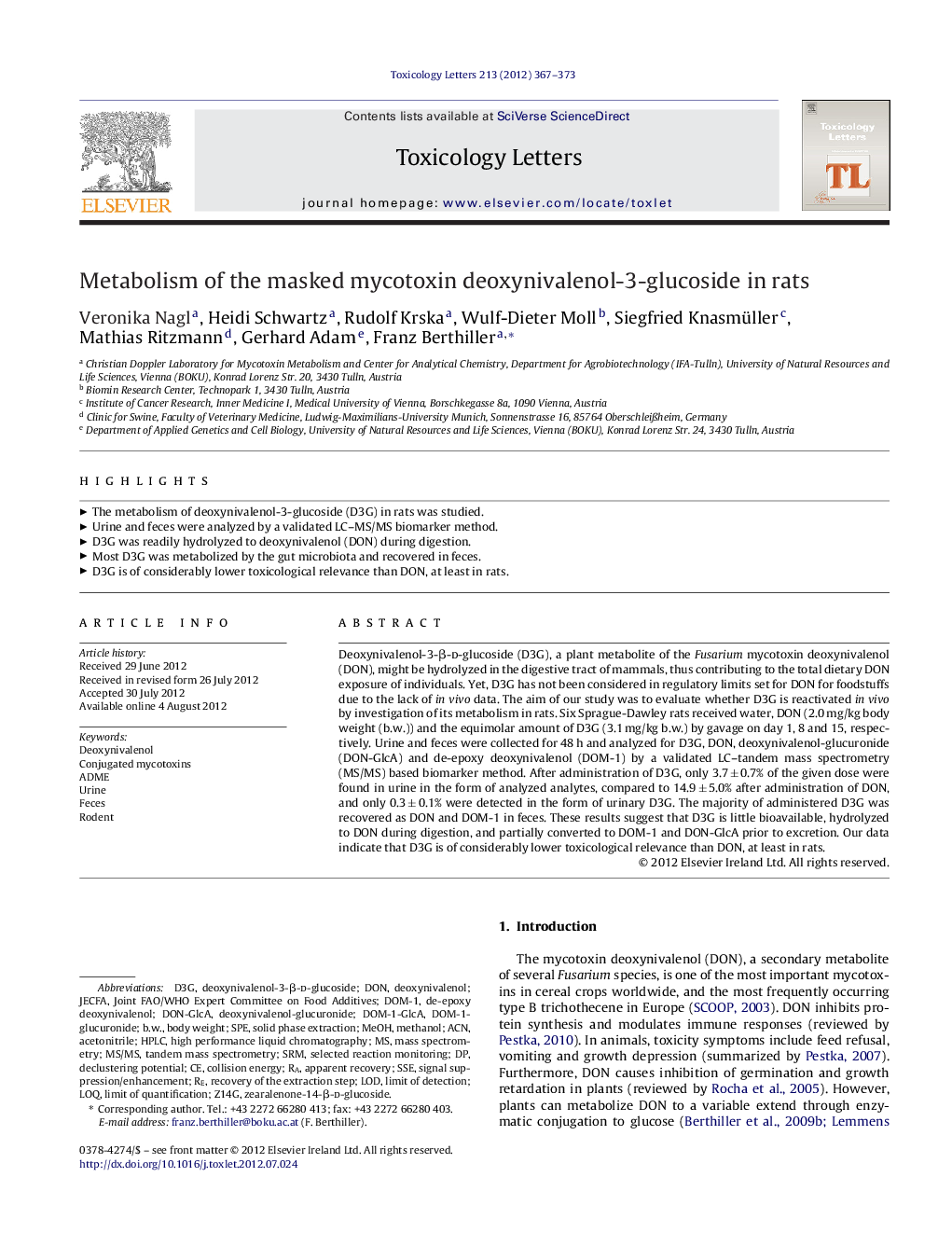| Article ID | Journal | Published Year | Pages | File Type |
|---|---|---|---|---|
| 5860692 | Toxicology Letters | 2012 | 7 Pages |
Abstract
⺠The metabolism of deoxynivalenol-3-glucoside (D3G) in rats was studied. ⺠Urine and feces were analyzed by a validated LC-MS/MS biomarker method. ⺠D3G was readily hydrolyzed to deoxynivalenol (DON) during digestion. ⺠Most D3G was metabolized by the gut microbiota and recovered in feces. ⺠D3G is of considerably lower toxicological relevance than DON, at least in rats.
Keywords
ACNdeoxynivalenol-glucuronideDON-GlcAJECFADOM-1b.w.D3GDeoxynivalenolSSEADMESPELOQSRMMS/MSUrineSolid phase extractionAcetonitrilecollision energyRodentLOD یا Limit of detectionde-epoxy deoxynivalenolDONMass spectrometryTandem mass spectrometryMethanolJoint FAO/WHO Expert Committee on Food Additiveslimit of quantificationlimit of detectionFecesMeOHselected reaction monitoringbody weightdeclustering potentialhigh performance liquid chromatographyHPLC
Related Topics
Life Sciences
Environmental Science
Health, Toxicology and Mutagenesis
Authors
Veronika Nagl, Heidi Schwartz, Rudolf Krska, Wulf-Dieter Moll, Siegfried Knasmüller, Mathias Ritzmann, Gerhard Adam, Franz Berthiller,
